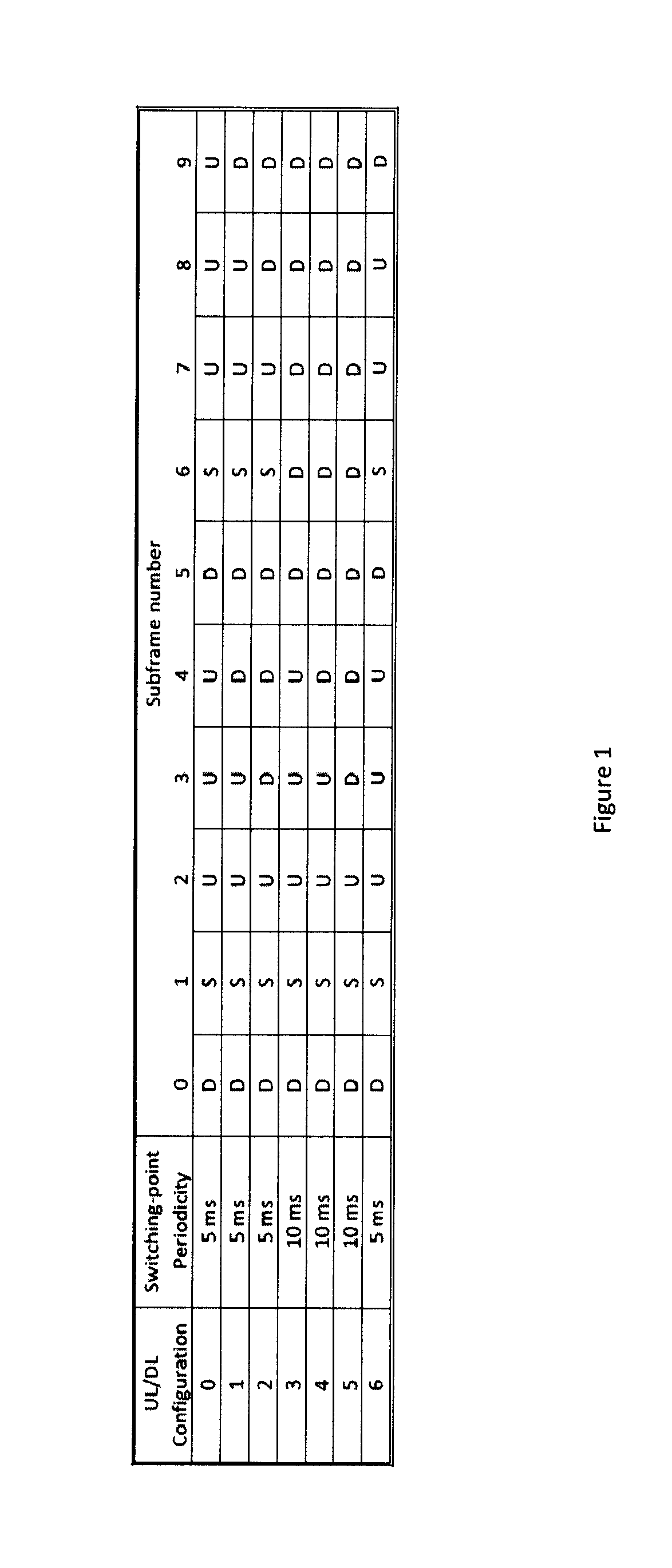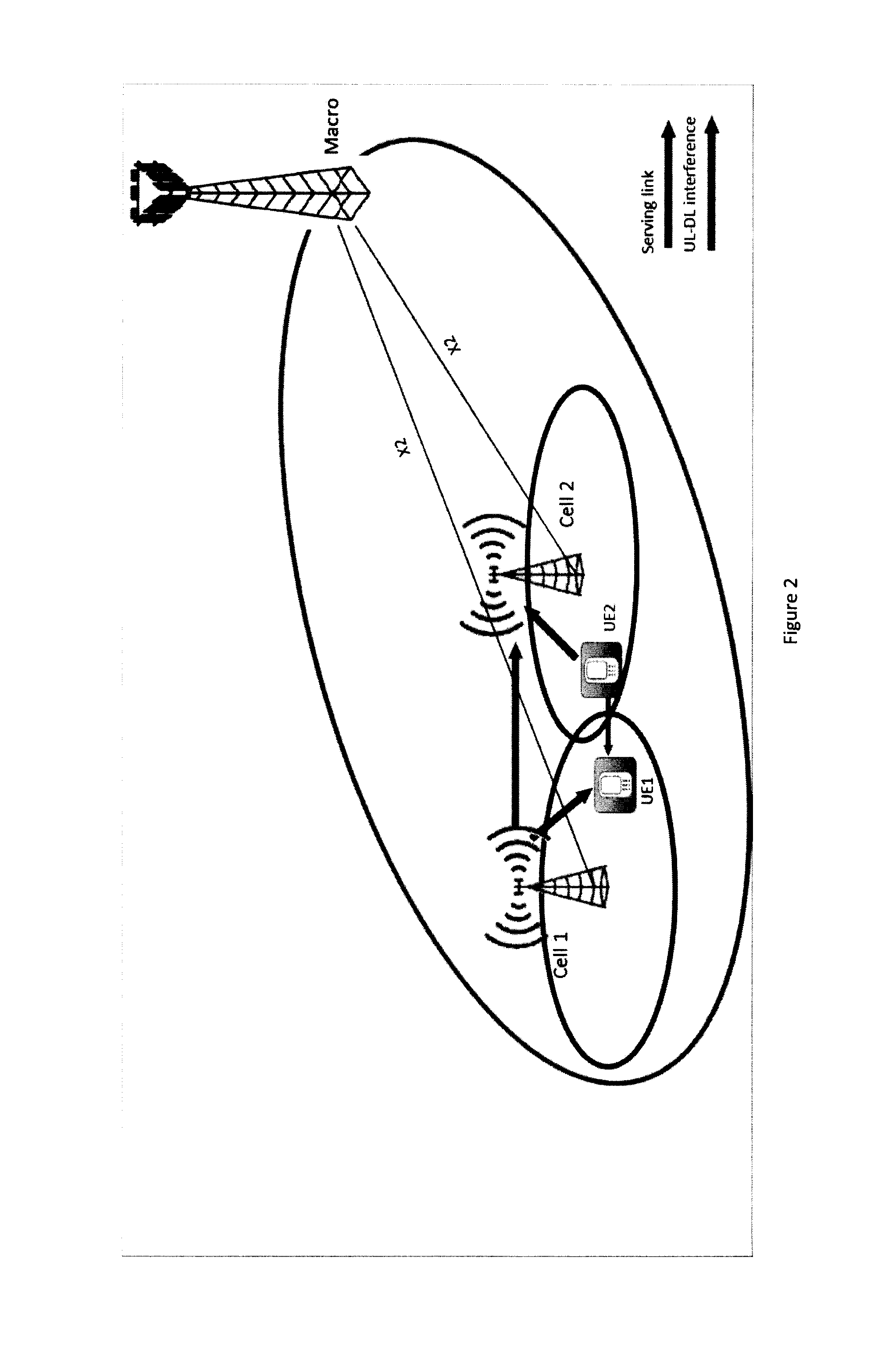Method for uplink-downlink interference mitigation in heterogeneous network
a heterogeneous network and interference mitigation technology, applied in the field of uplink-downlink interference mitigation in heterogeneous networks, can solve problems such as ul-dl interference in conflicting subframes
- Summary
- Abstract
- Description
- Claims
- Application Information
AI Technical Summary
Benefits of technology
Problems solved by technology
Method used
Image
Examples
Embodiment Construction
[0029]Certain embodiments provide for dynamic time division duplex (TDD) uplink (UL) / downlink (DL) reconfiguration. More specifically, certain embodiments realize the flexibility to have dynamic TDD UL / DL configuration in a TDD system to match the uplink and downlink traffic variation. Moreover, certain embodiments avoid having a negative impact of the UL-DL interference.
[0030]For example, certain embodiments can avoid or reduce UL and DL interference when two small cells, such as a pico cells or femto cells, in the coverage of a macro cell use flexible TDD UL / DL reconfiguration.
[0031]In certain embodiments, for example, a base station or eNode B (eNB) of a macro cell can send an authority indicator to a pico cell. The pico cell can send traffic load information to the eNB of the macro cell. The traffic load information can include the instantaneous traffic ratio between DL and UL, or the amount of data available waiting for scheduling in DL and UL, or the traffic ratio during prede...
PUM
 Login to View More
Login to View More Abstract
Description
Claims
Application Information
 Login to View More
Login to View More - R&D
- Intellectual Property
- Life Sciences
- Materials
- Tech Scout
- Unparalleled Data Quality
- Higher Quality Content
- 60% Fewer Hallucinations
Browse by: Latest US Patents, China's latest patents, Technical Efficacy Thesaurus, Application Domain, Technology Topic, Popular Technical Reports.
© 2025 PatSnap. All rights reserved.Legal|Privacy policy|Modern Slavery Act Transparency Statement|Sitemap|About US| Contact US: help@patsnap.com



